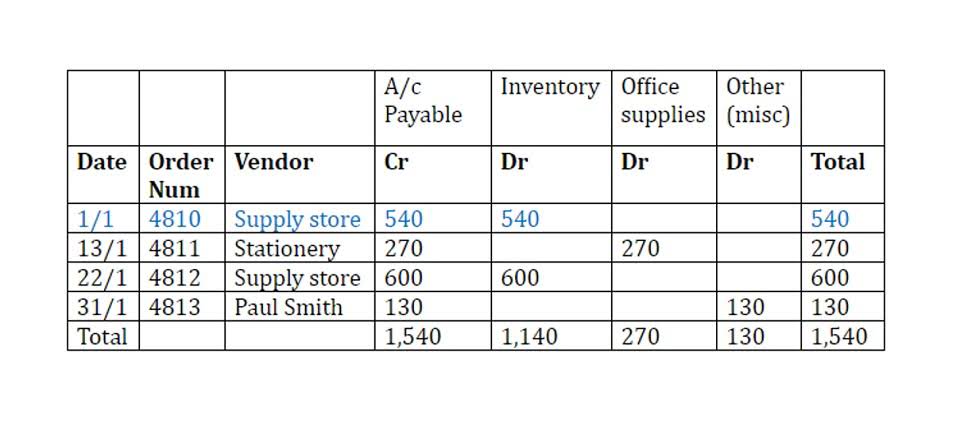What is the purpose of control accounts?

control accounting helps create streamlined financial reports, and can provide an additional verification step to ensure accuracy. For example, an accounts receivable control account must have a subtotal which matches the customer balances in the sub ledger. If there is a discrepancy with these totals, then there is an error somewhere in the books which must be identified and corrected.
- Accurate and transparent financial reports, backed by properly maintained control accounts, help to provide such assurance.
- However, if you’re still using a manual ledger system, the purpose of control accounts is to take the balance of the accounts in the subsidiary ledgers and post the total into the general ledger.
- An increase in this account reflects an acquisition of inventory, while a decrease indicates that inventory has been sold or used.
- The general ledger account that sums the subsidiary accounts is said to control the balances that are reported in the ledger.
- Understanding the work breakdown structure and its components is key to where to position control account placeholders to create the proper framework to monitor and control project processes and progress.
- From a risk management perspective, control accounts act as an additional checkpoint to detect fraudulent transactions or irregularities.
- The details for each control account will be found in a related (but separate) subsidiary ledger.
Advantages and Disadvantages of Using Control Accounts
Controls are generally maintained by businesses with complex financial structures, such as multinational corporations. When control accounts are used, businesses can be confident that their financial statements accurately reflect their true financial position. This information allows businesses to make sound decisions based on accurate information. For example, all payables entered on one given day will be collected from the subsidiary ledger and recorded a summary on the accounts payable control account. All control account records must be completed before the books close at the end of a reporting period.

Bookkeeping
GoCardless is a global payments solution that helps you automate payment collection, cutting down on the amount of financial admin your team needs to deal with. My Accounting Course is a world-class educational resource developed by experts to simplify accounting, finance, & investment analysis topics, so students and professionals can learn and propel their careers. For example, Jim’s hardware store invoiced two customers for a total of $700. But even as controversy swirls around OpenAI, the company keeps racking up wins. Maribel Lopez, an AI analyst who founded the research and strategy consulting firm Lopez Research, attributed Altman’s Teflon-like success to a series of smart business decisions the 39-year-old CEO has made.
Understanding Control Accounts in Context
- This section will look at the transactions for Fooz Ball Town and how to post to subsidiary ledgers for accounts receivable and accounts payable.
- The control account keeps the general ledger clean of details, but contains the correct balances used for preparing a company’s financial statements.
- An important perspective to consider in management accounting is how the diligent and strategic use of control accounts can support sustainability.
- It’s an online platform to practice your skills, give exams and get certified fast in you field of interest.
- And as he likes to brag, he appointed the conservative judges to the US Supreme Court who were instrumental in overturning Roe v. Wade — another blow to Americans’ reproductive freedoms.
Control accounts are like a subset of activities on a WBS, with their scope, schedule, and budget to be monitored and controlled. Accounting controls consists of the methods and procedures that are implemented by a firm to help ensure the validity and accuracy of its financial statements. The accounting controls do not ensure compliance with laws and regulations, but rather are designed to help a company operate in the best possible manner for all stakeholders. In conclusion, control accounts play a significant yet often overlooked role in promoting sustainability within organizations. By cultivating efficiency, mitigating financial risk and supporting strategic planning, they serve as an indispensable tool in the pursuit of a more sustainable future. Keeping track of the balance column is essential to determine the financial position represented by the control account.
Sam Altman is actually winning despite all the OpenAI drama
Control accounts help identify discrepancies in financial data quickly and accurately. When the balances in the subsidiary ledgers do not match the balance in the respective control account, it points to an error that needs investigating. This preventative approach can save a company significant time and resources in rectifying financial mistakes.
Maintaining Accountability with Control Accounts

Invoices that have been created, customer payments, product returns, refunds, and credit memos posted in the various accounts receivable ledgers will all be included in the accounts receivable https://www.bookstime.com/. It is necessary that the ending balance of the subsidiary account is same as the control account, otherwise it can be assumed that the required entries have not been made in both the places properly. The term control account refers to the accounting ledger where a summary of all transactions having the same nature is recorded. The control account format is finally shown during financial reporting which reflects all the balance of subsidiary account.
- UB is a temporary holding budget that should be allocated as soon as practical to either the second PMB element, the Summary Level Planning Packages (SLPPs), or, the third and final element of the PMB, Control Accounts (CAs).
- For example, Jim’s hardware store invoiced two customers for a total of $700.
- Doing this allows you to produce a trial balance and balance sheet without all of the transactions displayed.
- The use of accounts receivable and accounts payable control accounts creates an accounting system where only the general ledger is self balancing.
- Control accounts function as an inherent component in the broader accounting system architecture.
- If your accounts don’t match, it’s likely that the subsidiary ledger has the error.


 Rəsmi Saytı 202 Our Lady Of The Pillar College Cauayan – 688
Rəsmi Saytı 202 Our Lady Of The Pillar College Cauayan – 688